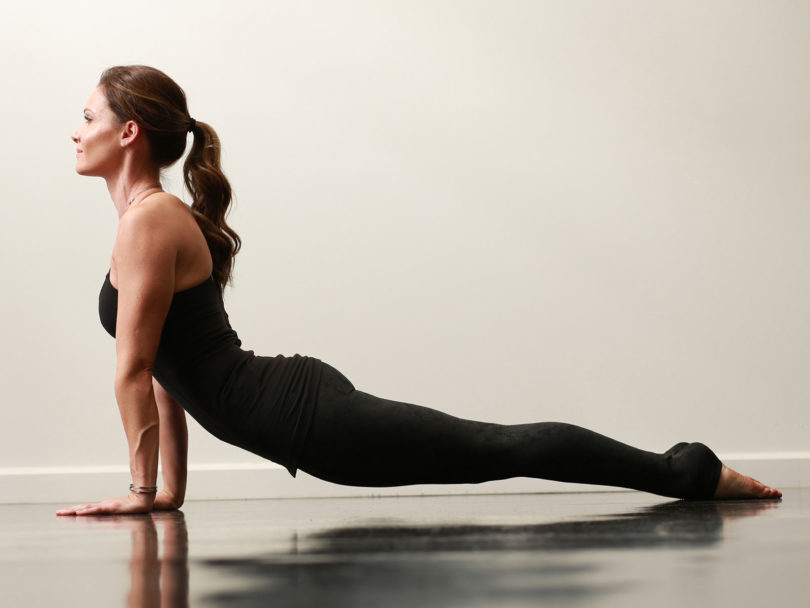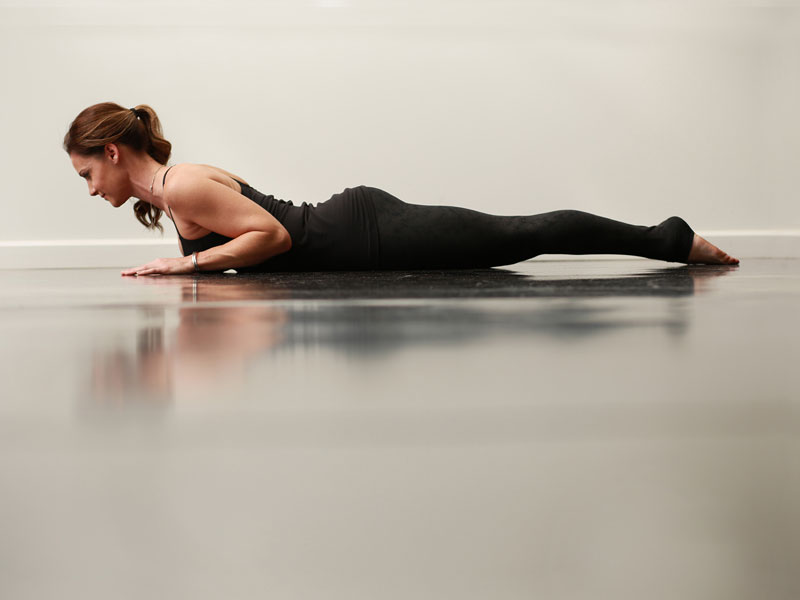U r d h v a -M u k h a- S v a n a s a n a
Like chaturanga, upward facing dog is often seen as a transitional posture. Students are apt to rush through it without taking time to establish the pose correctly. This means they are not getting the most out of this pose. Over time, a repetitive practice with bad alignment can also lead to injury through wear and tear on the shoulders. Proper alignment can deliver full benefits and protect you at the same time.
Benefits: Strengthens the arms, wrists, legs and abdomen. Increases flexibility in the back.
- Lay down on your belly. Firmly press the tops of your toes into the floor, activating your thighs. Move your hands back so that your wrists line up with your shoulders. Keep your elbows tucked in toward your sides. Broaden your chest by slightly lifting your sternum and taking a couple of easy breaths. On an inhale, begin to press into your hands and lift your chest upward. For this first version you may keep your torso on the floor and work on lifting your chest.
- Lay down on your belly and take rest. Stack one palm over the other, palm face down, allowing your forehead to rest completely on the back of your hands.
- On your second version prepare the same way — press your toes into the floor, lengthening the lower back. Bring hands back so that your wrists line up under your elbows and spread your fingers wide. Pull elbows firmly in toward your sides and on an inhale lift yourself up. This time bring the hips up off the floor. Keep your chest broad with your shoulder blades tucked in on your back. Be mindful to create space in the back of your neck. Hold for 2-3 breaths and then release down.
- Rest in Balasana (Child’s Pose) for 4-5 breaths.
Photos by Brian Freer


